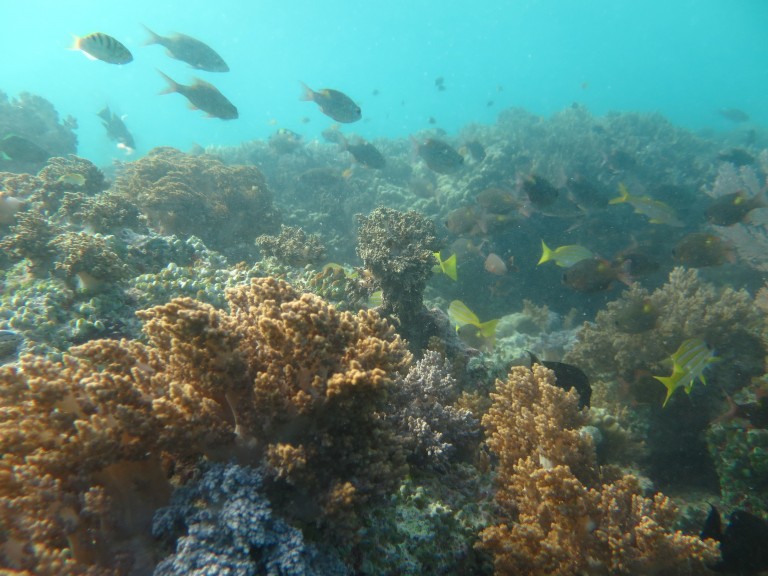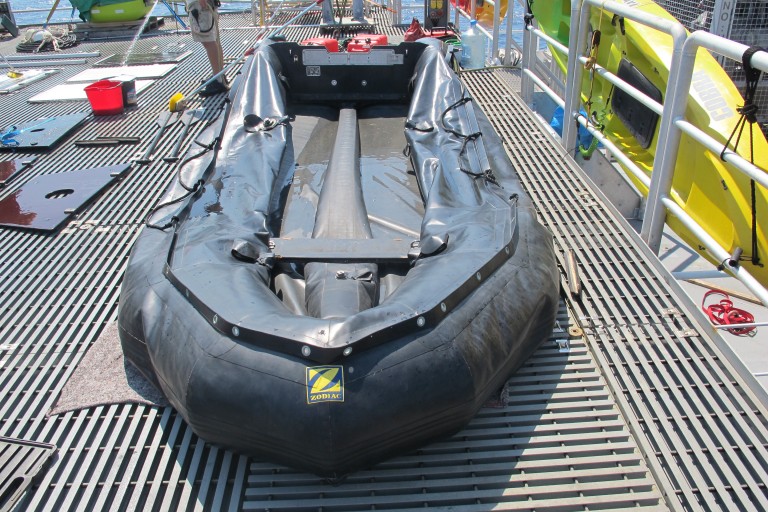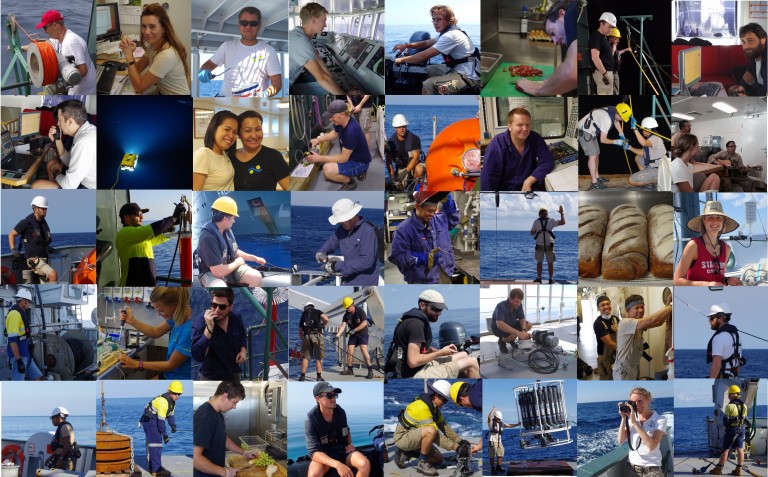
After 23 days at sea we are now in the middle of our two and a half day transit from Scott Reef to Darwin. Over the past three days we have successfully recovered the instruments we deployed almost three weeks ago, including those at three deep mooring sites within South Scott lagoon and at 26 shallow reef sites deployed along both the South Scott reef rim and throughout the shallower North Scott lagoon. Retrieving this number of instruments has been a major effort using both Falkor and its workboats. All data has now been downloaded and we have been fortunate to have had nearly 100% data return from our instruments. It will take several months to process and analyse this very comprehensive dataset, through the data we have collected in real time, some key science findings from the cruise are beginning to emerge. A few are discussed here.

Circulation and heating of the shallow reef rim
Our array of wave gauges and current profilers deployed along the shallow reef rim of both South and North Scott have revealed how the combination of breaking waves and the strong tides collectively drive transport and material exchange across the reef. We have been fortunate to have experienced a wide range of wave conditions during our study, which when combined with the spring-neap tidal cycle will provide insight into the hydrodynamics of the shallow reef of both Scott Reef, as well as coral atolls. Our shallow reef instrument deployment has also specifically targeted several long term ecological monitoring sites maintained by AIMS. During this deployment period, the AIMS RV Solander deployed a number of satellite-tracked drifters during the period of coral spawning, which when combined with this instrument dataset, will provide insight into the fine-scale larval dispersal patterns across Scott Reef’s shallow reef habitats. Finally, detailed measurements of the temperature variability across a section of shallow reef will be used to develop improved heat budget models for shallow reefs that are needed to predict patterns of thermal stress and bleaching within coral atolls.
The role of atoll reef morphology on flushing and water quality
While some historical data on the circulation of the deep (~50 m) South Scott lagoon exist from previous AIMS trips, data on the circulation of the much shallower (~10-20 m) and enclosed North Scott lagoon had been lacking. On this cruise, we successfully deployed a number of instruments throughout this reef-lagoon system, which has revealed very different hydrodynamics than within the adjacent South Scott lagoon during the same period. The presence of only two very narrow channels within North Scott (where water can most readily exchange with the ocean) generates highly asymmetric water levels and tidal currents that substantially reduces its flushing (or residence) times. Biogeochemical measurements of nutrients and carbonate chemistry at 12 hour sampling stations within North Scott will be used by to investigate how the differences in the flushing influence variations in water quality over each tidal cycle.
Biogeochemical fluxes by tidal pumping and links to spatial ecology

This cruise has presented a unique opportunity to integrate one of the most detailed hydrodynamic studies of a coral reef atoll with simultaneous and co-located measurements biogeochemical properties of the water column. We have completed several 12-24 hour sampling stations (5 in total) from Falkor at important areas within the reef-lagoon system, in order to quantify fluxes of nutrients, carbonate chemical variables, and heat. Through this work we have already observed strong signatures of both the surface and internal tide on these fluxes – by understanding these dynamics this will allow us to develop improved nutrient and heat budgets for Scott Reef lagoon. Most importantly, through the continuous 24 hour operations onFalkor that have integrated both oceanography and benthic habitat mapping, we now have a unique opportunity to assess how the hydrodynamics, nutrient and heat fluxes shape the spatial ecological patterns that have been documented within Scott Reef and its surrounding shoals.

